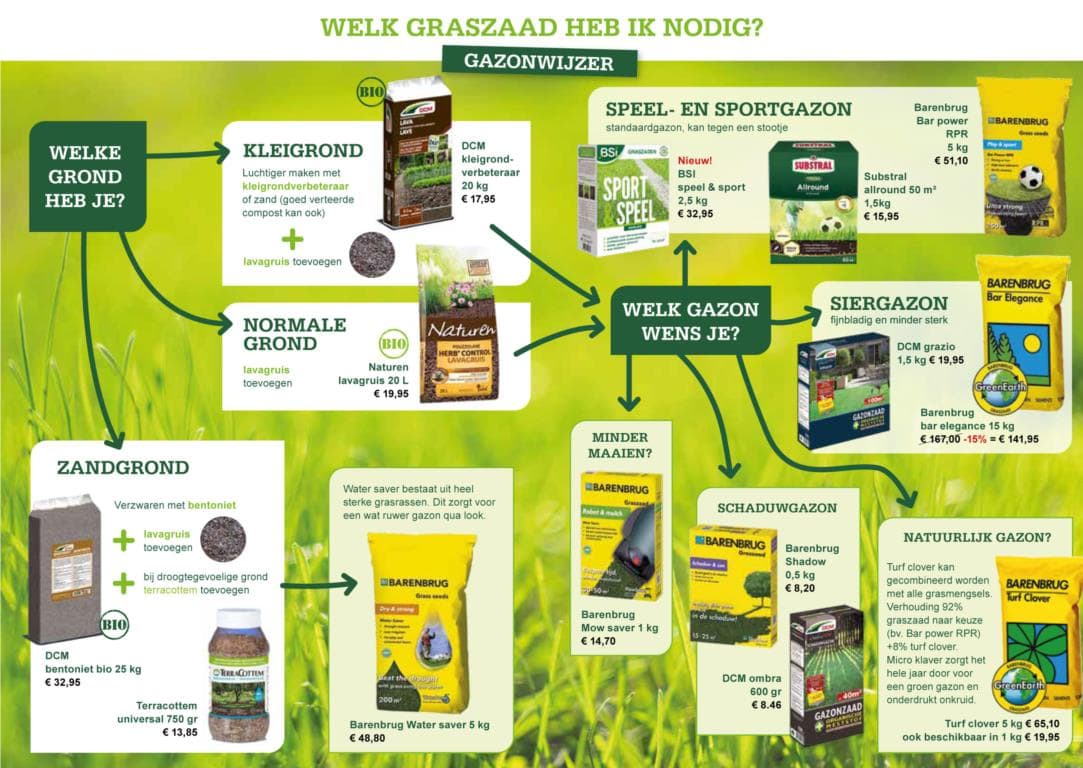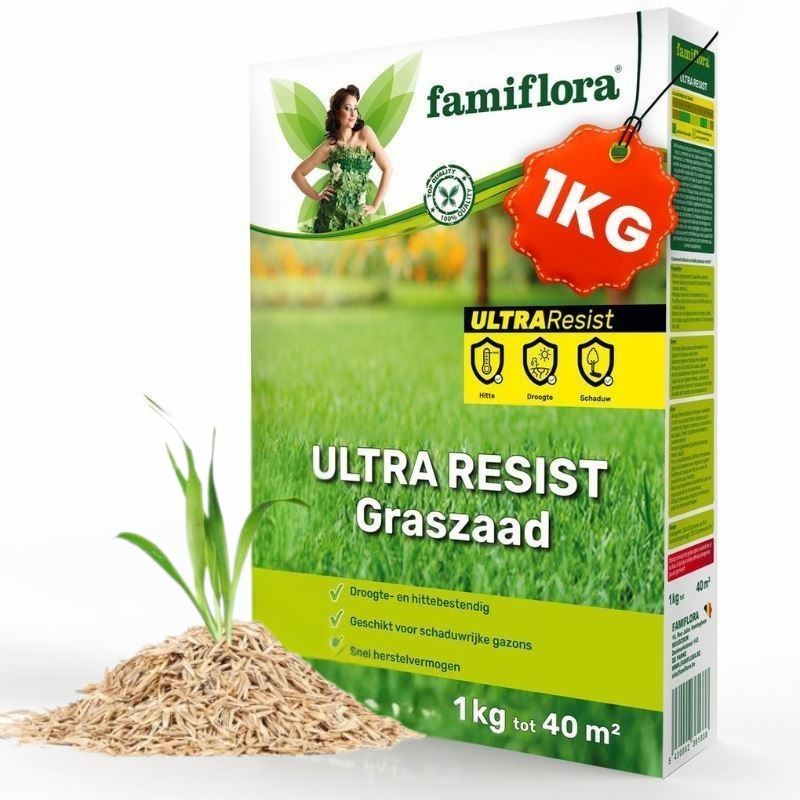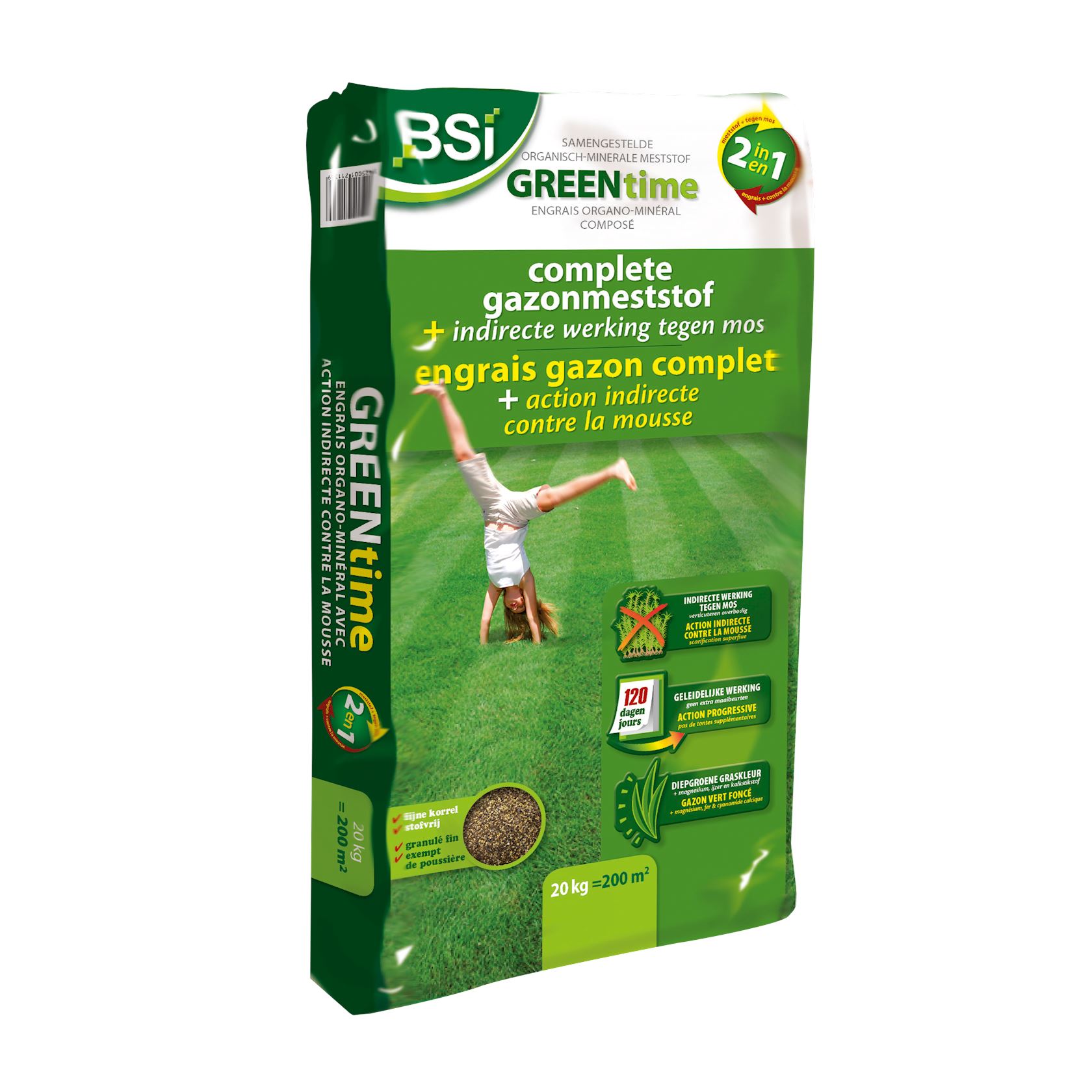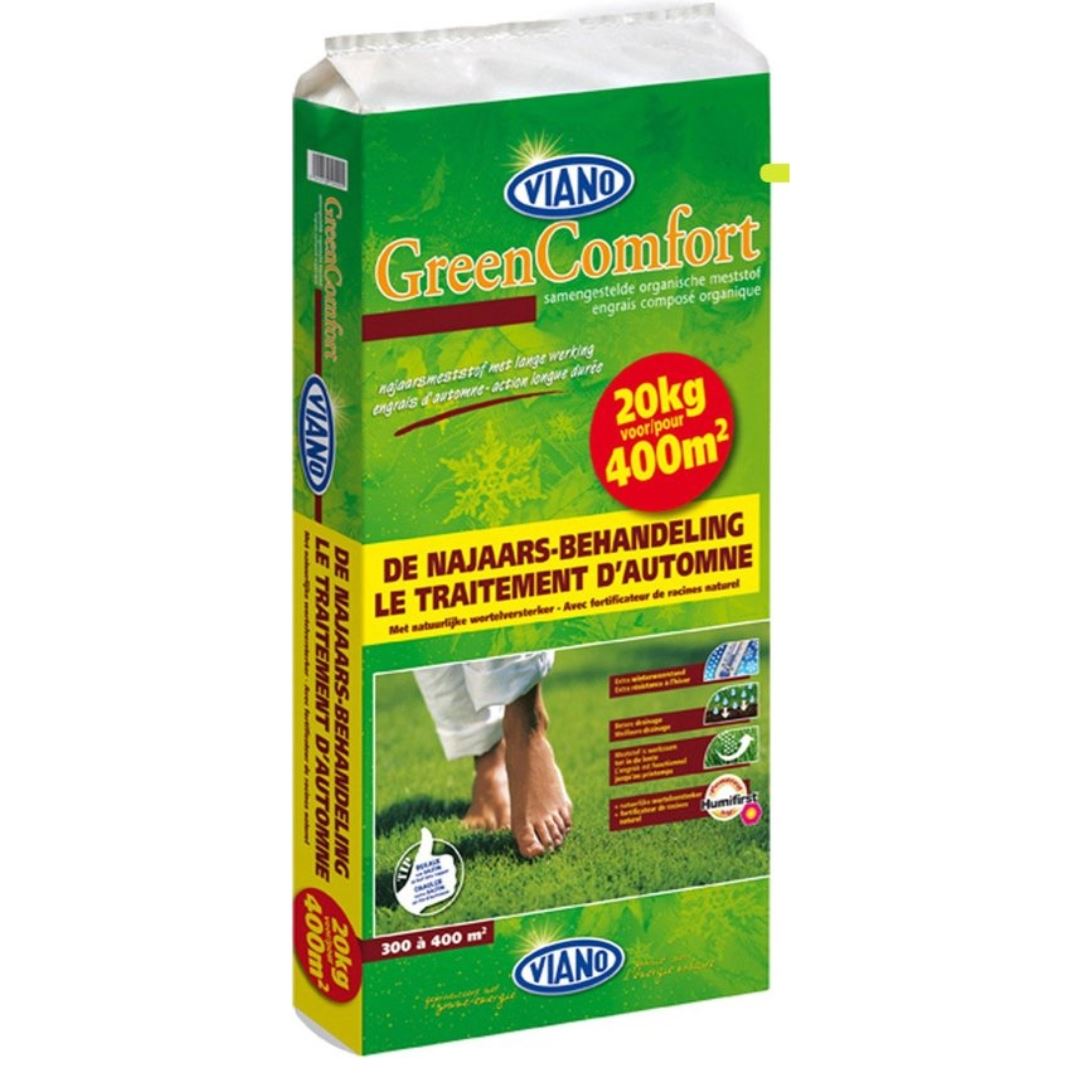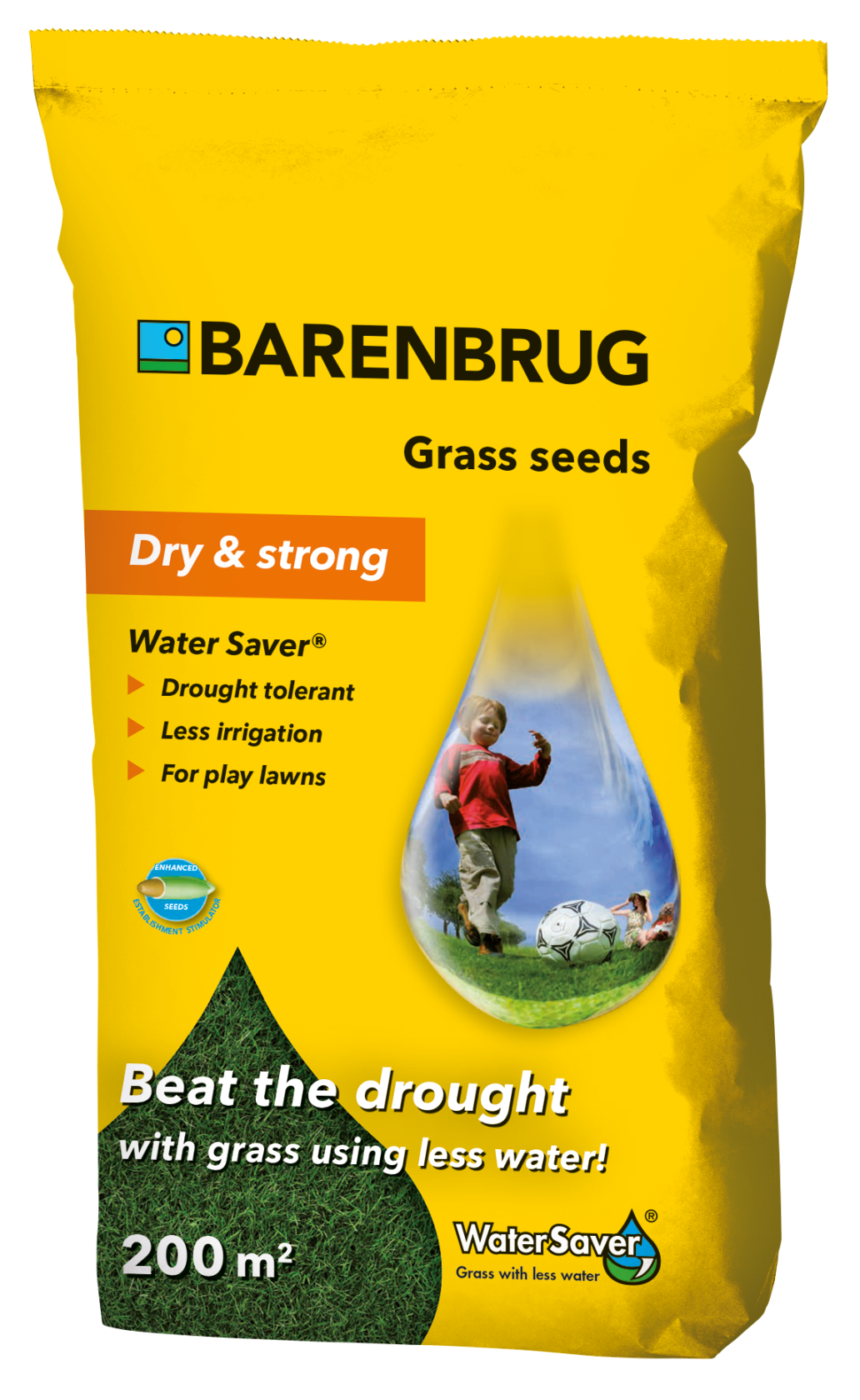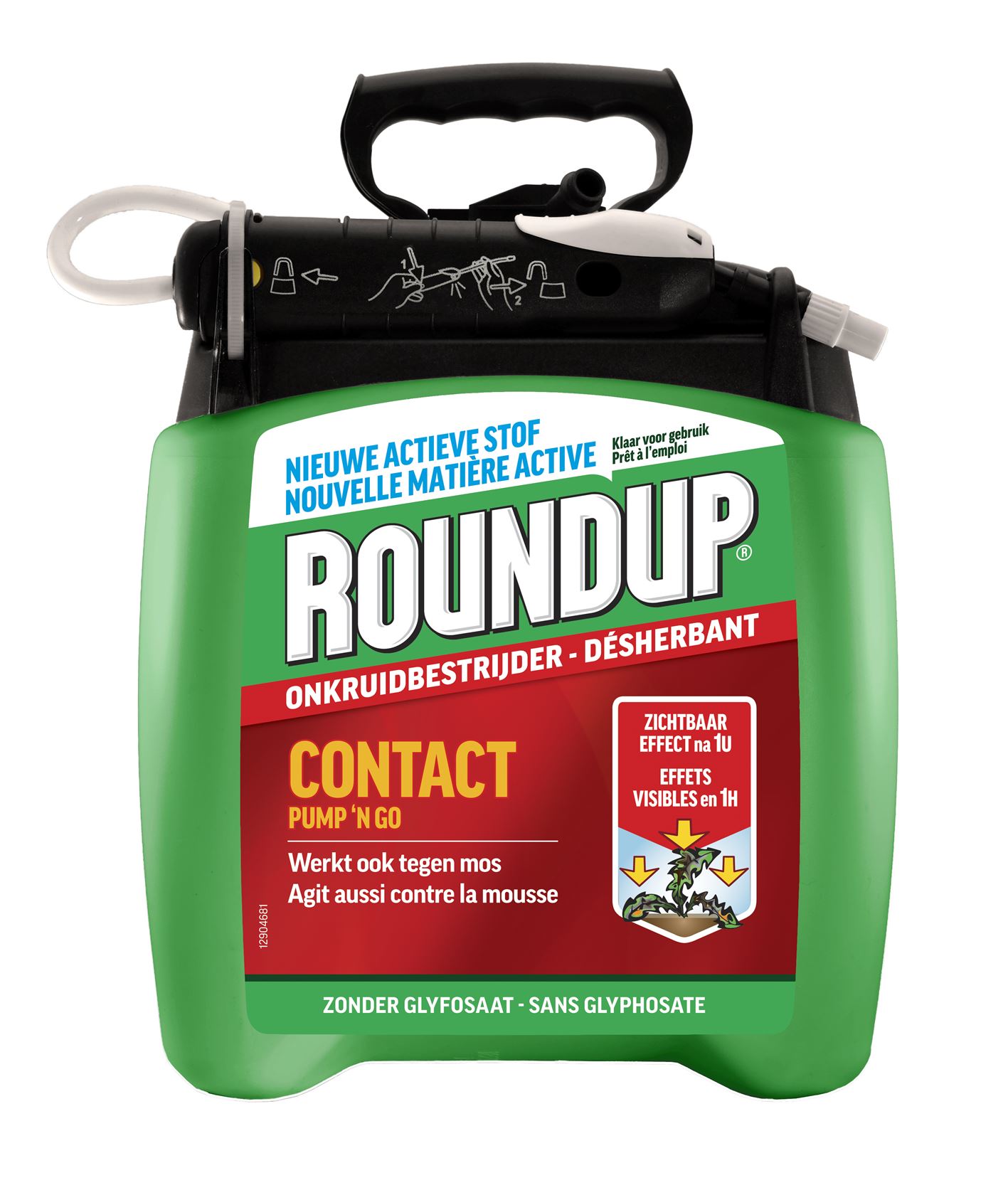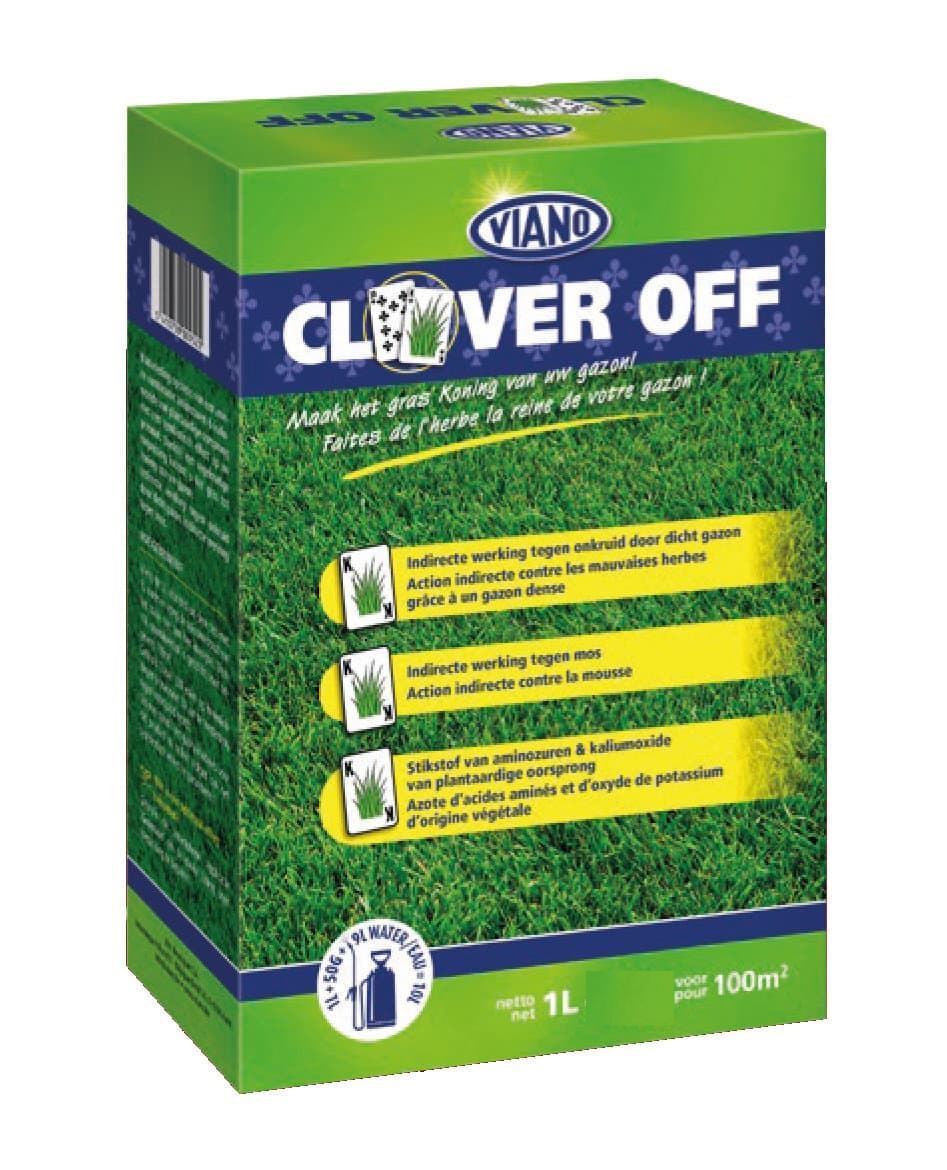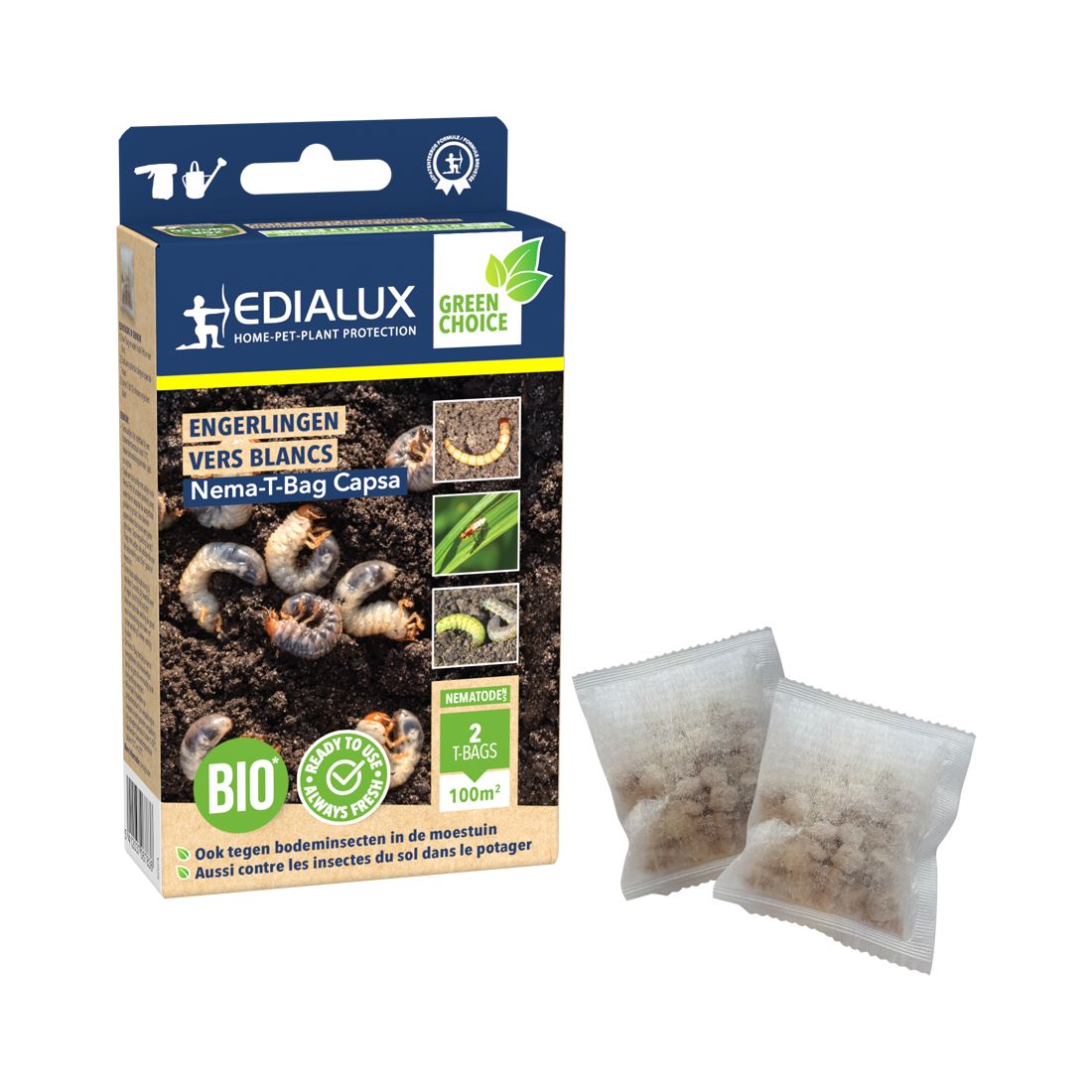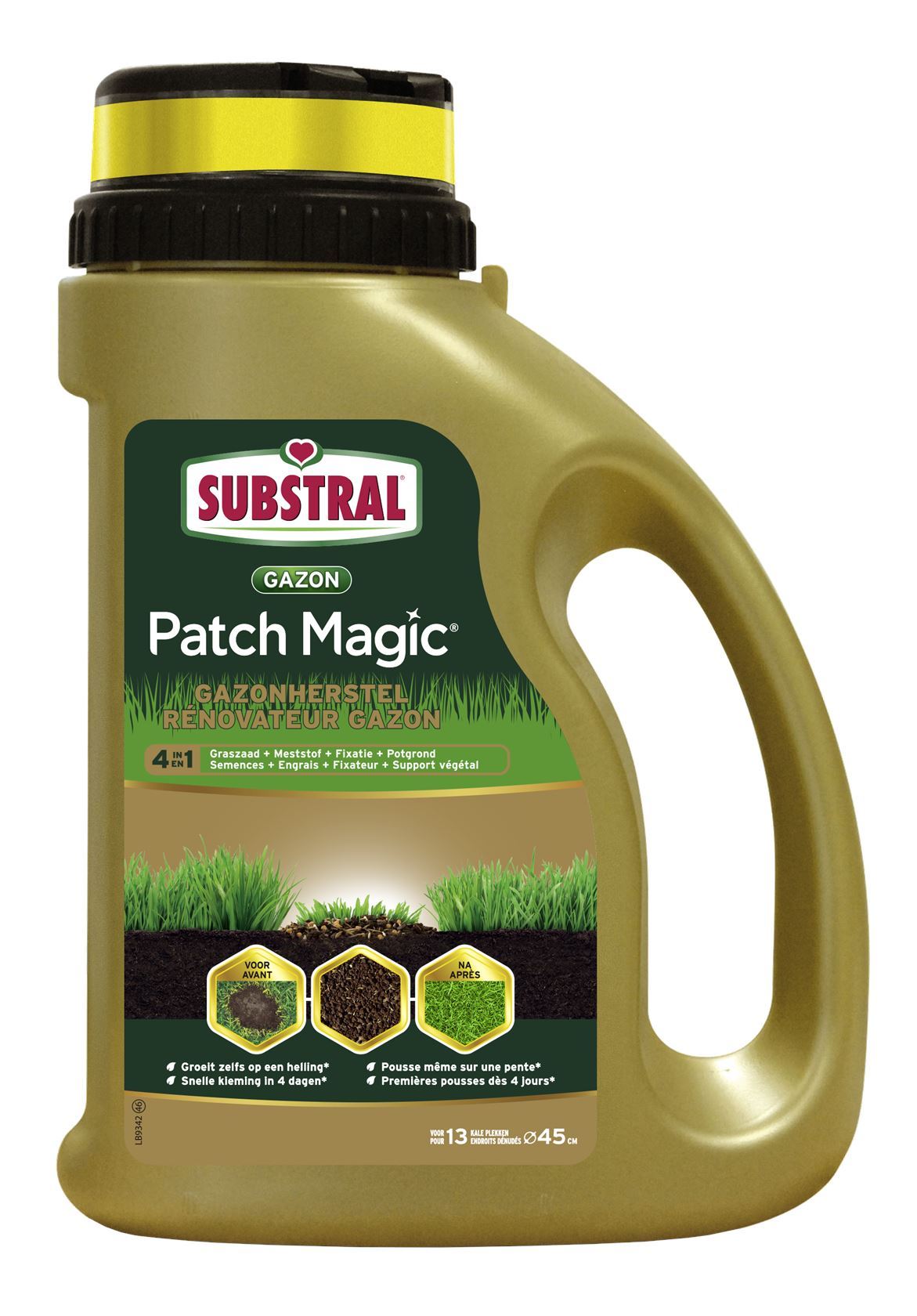
How to get a beautiful & healthy lawn
Our tips for a beautiful & healthy lawn.
Weeds
After the ban on selective herbicides (glyphosate) & roundup, many gardeners were at a loss for words. The dandelions, clovers & daisies reared their heads in the lawn while most would like a tight green lawn. Currently, you will find many "weed killers" on the market based on acids (such as pelargonic or acetic acid). These herbicides will burn both the good grass and the weeds, and do not kill the root system of the weeds. So such products are more suitable for use on a driveway or pathway but even then you will have to repeat the treatment several times. So it is more important than ever to maintain your lawn properly!
A weed burner is also an option but we are not in favor of it. This may be easy but you really only need high temperature to also burn the root, and this is usually achieved with a professional device but not with the devices offered for sale to individuals. Also, burning weeds is taxing on the environment.
Moss & scarification
In order to show its greenest side, your lawn needs water, oxygen and nutrition. Over time, a felt layer forms on your lawn, consisting of cut grass, weeds and moss. This layer suffocates your lawn, causing it to gradually turn yellow and become susceptible to disease. By scarifying once or twice a year, the top layer of the lawn remains airy and the nutrients and moisture find their way into the soil easily. Before you start scarifying, you should always spray the moss to destroy it. Moss is a spore plant and when scarifying you will otherwise spread small particles of moss everywhere, making the situation worse. You can use Bio-press of Moscide for this purpose, for example.
When scarifying, you go 3 to 5 mm deep into the lawn with a scarifying rake or an electric scarifier to scrape away the thatch layer. You do this both lengthwise and widthwise.
You can find more information about scarifying here
Vermin
• Eelworms and leatherjackets
In every healthy soil there are soil insects such as worms and larvae, but you'd rather not have grubs and black maggots as your guests. These grubs love the roots of your lawn. These thick & yellowish white larvae first create small dry spots in the lawn but then quickly attack it. You will have to take action immediately! Unlike grubs, however, leatherjackets eat the grass, not the roots. You can read here how to distinguish between these larvae and how to combat them. But the best and most ecological solution is to use their natural enemy in the form of nematodes.
• Moles
Some invaders, such as grubs and black eyed larvae, you can barely see but 1 undercutter literally rears its head: the mole. Once it has found your garden, it is no fun getting rid of it. There are many products on the market to combat or chase away these pests. We take a closer look at them for you here, and give you some golden tips!
You can find more products for pest control in our garden pharmacy
Sowing and seeding
Any damage in the lawn (such as bare spots) is a potential germination site for weed seeds and street grass. It is therefore important to sow bare spots as soon as possible with a fast-germinating grass mixture. Street grass germinates from 8°C while most grasses germinate at 10°C. Can't you sow in the winter? Yes, the grass seed with SOS technology from Barenbrug germinates from 4°C. Please note: this grass seed is only suitable for sowing small bare spots, not for sowing a whole new lawn.
Are you starting completely from scratch? Then you can also choose to lay turf. In this article we list the advantages and disadvantages of sowing grass or laying turf. Have you made up your mind and have you decided on turf? If so, we will share some practical tips for laying the turf here!
Not sure which grass seed to choose? We make it easy for you with our lawn guide!
After the stress of choosing, you can finally start seeding! We have listed 5 of the most common mistakes for you here.
Fertilization & maintenance
• Fertilize the lawn regularly
It is important not to spread just any fertilizer but to adjust the type of lawn fertilizer according to the season and the needs of your lawn. During the spring, extra nitrogen is important to stimulate root growth because, of course, we want a full lawn. Magnesium is also welcome because it ensures a deep green color.
In the fall, on the other hand, we want the growth to slow down & the roots to strengthen. That is the role of potassium in fertilizer. As the root system strengthens, the lawn is also less susceptible to all kinds of diseases and fungi that lurk in the winter (due to snow left on the lawn, for example). You can read all about the advantages of autumn fertilizer here.
• Liming
It is recommended to measure the pH level of the soil before liming. This way you will know for sure if the soil needs additional lime at all. Is the pH lower than 6.5? Then the soil is acidifying, and it is wise to add lime. Ideally you should do this in the winter or early spring so that the lime can be absorbed slowly.
• Mowing
Cut the grass weekly and not too short. Especially in warm weather, the lawn can burn more easily by cutting it too short.
• Drought
Summers are getting drier and hotter. Not only do we suffer from this but also our lawn sees off. It is therefore important to adapt our garden to the changing climate. For example, we can choose strong grass varieties that are more drought-resistant (such as reed fescue and field bean grass), and we can also bring in some tools that help retain moisture. During the summer, we will have to learn to accept that our lawn does not look fresh green but as soon as summer is over, we can start with action plan "SOS lawn".
At Hermie's the grass is always greener & so is yours with our tips!👇
More info? Receive all our gardening tips directly in your mailbox!
We'll only email you handy facts, green advice and our best promotions & discounts. You'll receive it about once a week and you can unsubscribe at any time. No spam, promise 🤞












